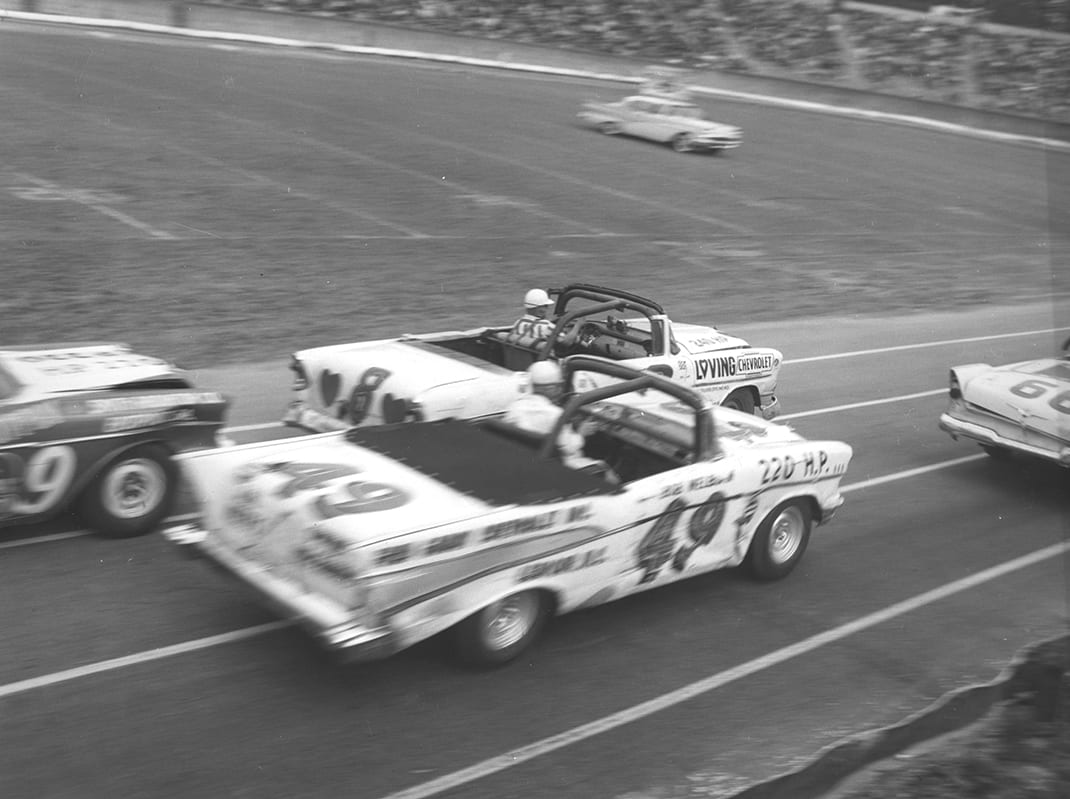This story originally appeared in the April 2016 edition of SPEED SPORT Magazine.
As the 1955 NASCAR Grand National season ended, the sanctioning body’s founder, Bill France, was faced with a problem.
His 8-year-old sanctioning body was growing fast and everyone wanted to be a part of it.
France’s premier division, the Grand National Series, had grown from only eight races in its inaugural year in 1949 to 45 events in 1955. There was also the 31-race Short Track Grand National division, an entity all its own that brought top series cars to tracks less than a half mile in length. That meant running 76 races in 52 weeks.
NASCAR’s very small staff of executives and public relations representatives hustled day and night to stay on top of the numerous events going on around the nation.
By Christmas of 1955, France delightfully stared down to his greatest gift ever; a desk filled with more than 100 requests from track owners asking for a chance to host NASCAR races. But many of the requests came from promoters with tracks a half mile in length or larger, meaning they wouldn’t fit the criteria of the Short Track Grand Nationals.
Known as a brilliant innovator, France found the answer. He organized a division that featured another of Detroit’s models — the popular convertibles with their decorative chrome and open interiors.
“We can hold about 50 Grand National races in a single season,” France said in the book, “Rumblin’ Ragtops — The History of NASCAR’s Fabulous Convertible Division” by Greg Fielden. “It’s a problem with all these additional requests for Grand National races. But it’s not a problem we can’t solve.”
Stretched to the maximum with divisions already in operation and Daytona Int’l Speedway in the planning stages, France needed help.
Off in the distance was the Indianapolis-based sanctioning body called the Society of Autosports, Fellowship and Education, better known as SAFE. Its founders, Harry Redkey and Charles Scharf, had built a premier convertible series called the Circuit of Champions All Stars that had been successful for five seasons.
On Dec. 22, 1955, France announced a merger between NASCAR and SAFE that would entail 2,000 races on more than 275 tracks with an advertised financial commitment of $2 million in purses.
Curtis Turner, a NASCAR Hall of Fame inductee this past January, clearly dominated the inaugural 1956 NASCAR Convertible Division season. He won the division’s first race in Daytona Beach, Fla., on Feb. 25, 1956, and logged an additional 21 victories in 42 starts during the 47-race season. He drove a factory Ford fielded by John Holman and Ralph Moody.
Turner lost the championship to Bob Welborn, the winner of only three races that year in 45 starts. The point system rewarded consistency and Welborn’s 39 top-five finishes put him on top.
That year, the Convertible Division also provided an interesting footnote in NASCAR’s storied past. On Sept. 30 at Asheville-Weaverville (N.C.) Speedway, a major crash eliminated 14 of 24 cars in the field. Attrition took its toll on the rest. Turner was the only driver running and was crowned the winner. Fewer than half the starters in 28 of the 47 races that year were running at the end.
Welborn defended his convertible title in 1957 and ’58 through 14 additional victories, 33 top-five finishes and 43 top-10 results. He started 111 Convertible Division races and drove his Chevrolets to 19 wins (two in 1959) and 87 top-10 finishes with 18 poles. He died in 1997, one year before NASCAR listed him as one of its 50 greatest drivers.
Joe Lee Johnson was the final Convertible Division champion in 1959 during a sharply abbreviated schedule of 14 starts that saw Johnson win twice and earn only $7,056.35. Ned Jarrett won the final NASCAR-sanctioned convertible race at the Charlotte (N.C.) Fairgrounds on Aug. 23, 1959.
Click below to keep reading.
